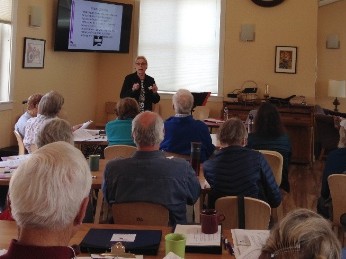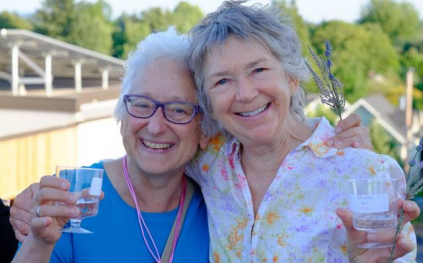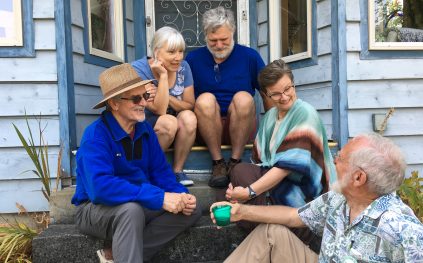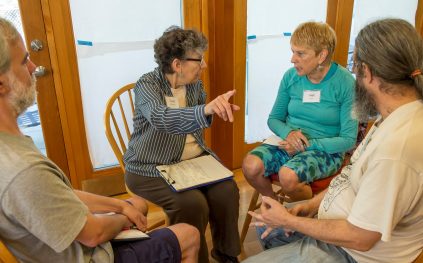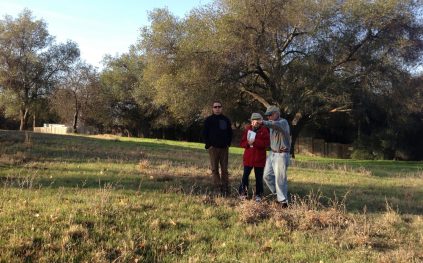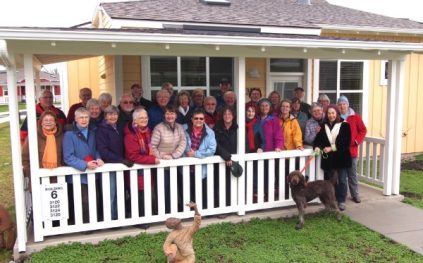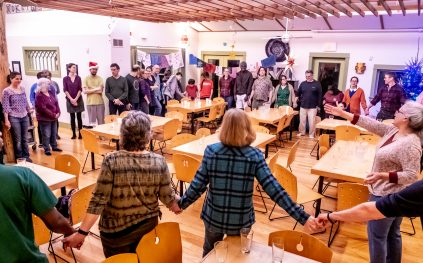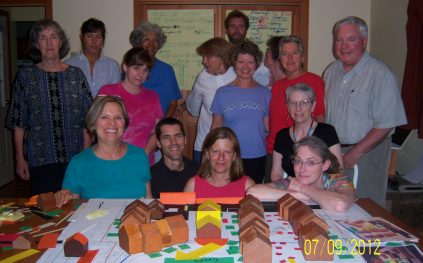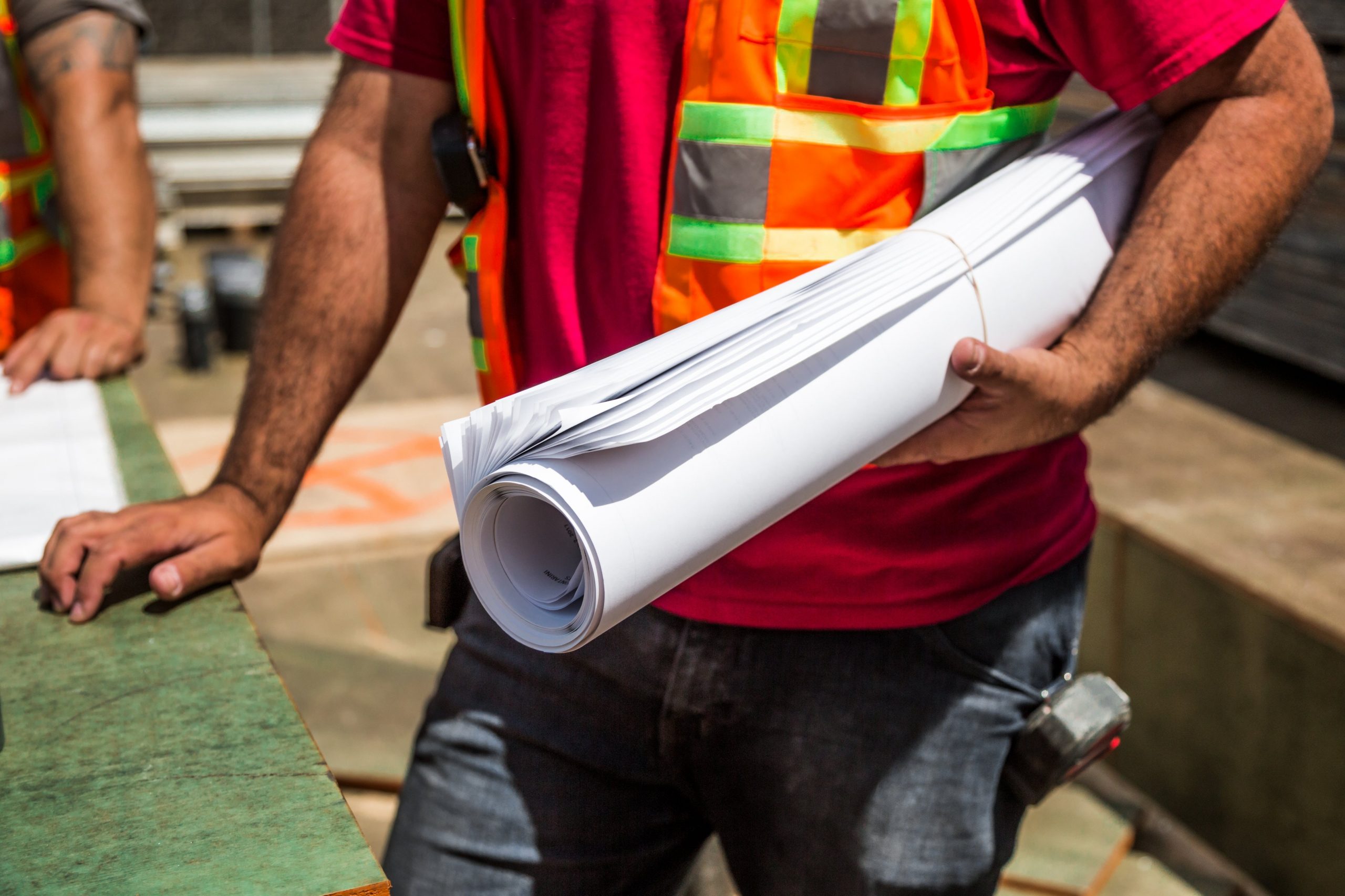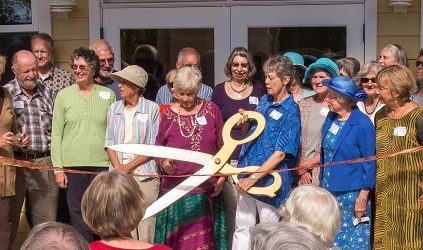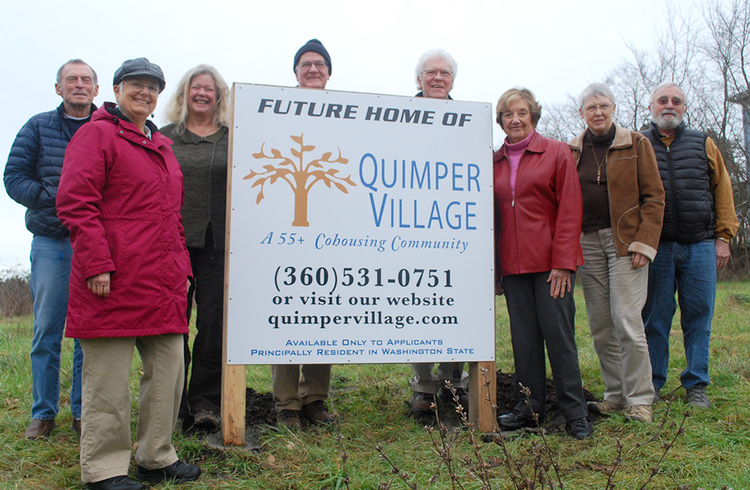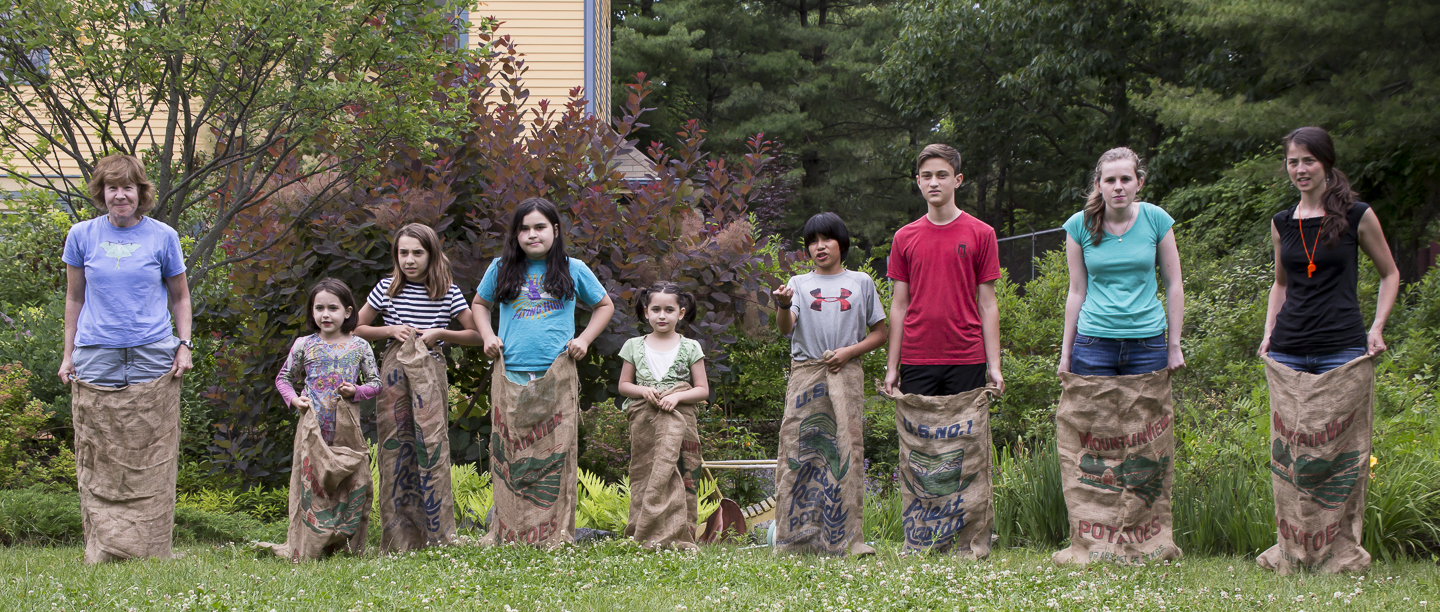Vision
Cohousing communities begin with a vision, often with just one burning soul. As that vision spreads and evolves, members join and the project takes shape. Some groups follow tried-and-true process while others forge the way for new innovations. All share a passion for living more closely with neighbors and more lightly on the earth.
The steps below (which are not yet links) walk you through the general process, though it tends to be messier than this, with steps overlapping and intersecting. The Relationships, Resources and Buildings pages provide detailed information, sample documents and alternate approaches.
